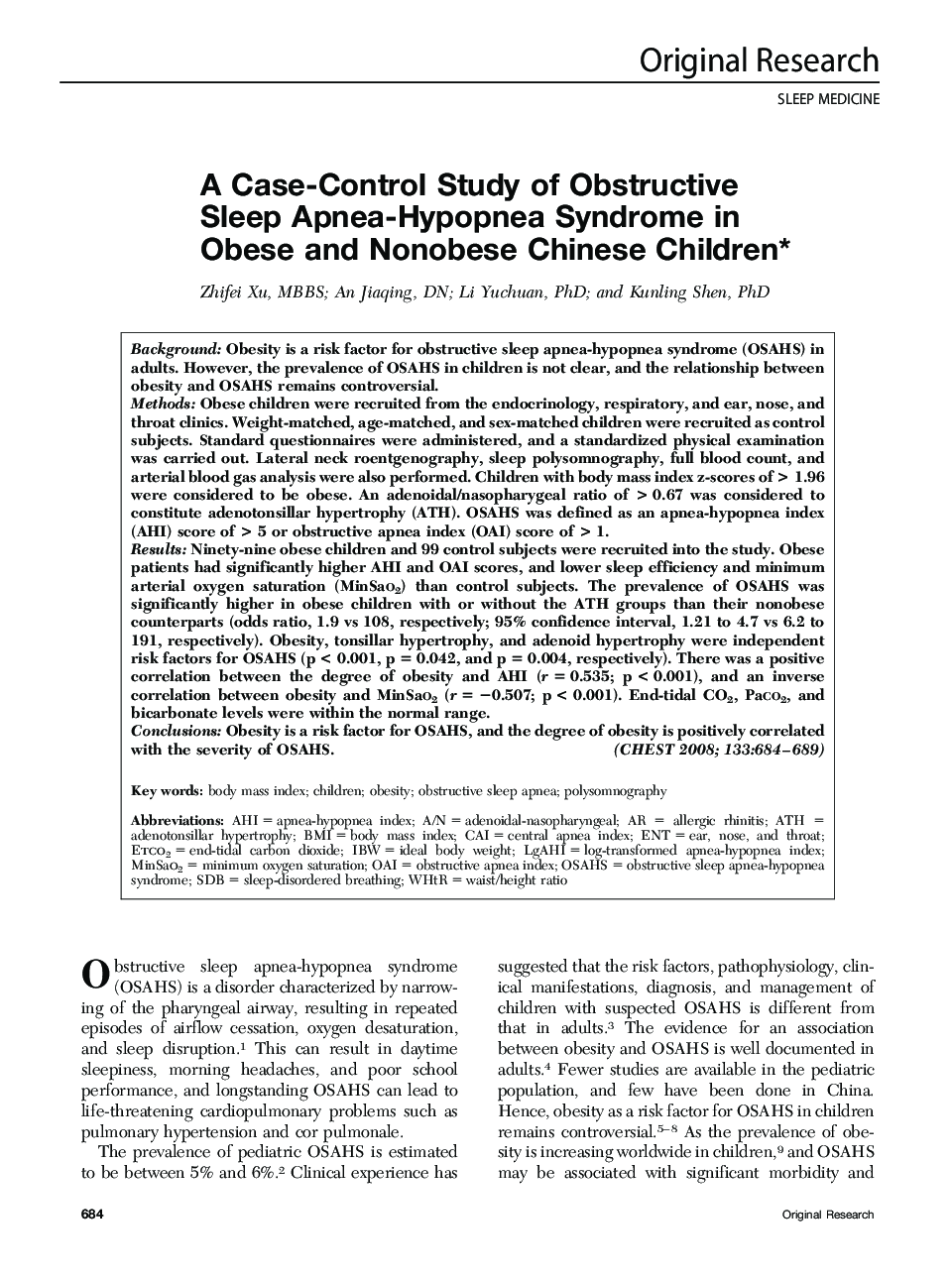| کد مقاله | کد نشریه | سال انتشار | مقاله انگلیسی | نسخه تمام متن |
|---|---|---|---|---|
| 2903897 | 1173399 | 2008 | 6 صفحه PDF | دانلود رایگان |

BackgroundObesity is a risk factor for obstructive sleep apnea-hypopnea syndrome (OSAHS) in adults. However, the prevalence of OSAHS in children is not clear, and the relationship between obesity and OSAHS remains controversial.MethodsObese children were recruited from the endocrinology, respiratory, and ear, nose, and throat clinics. Weight-matched, age-matched, and sex-matched children were recruited as control subjects. Standard questionnaires were administered, and a standardized physical examination was carried out. Lateral neck roentgenography, sleep polysomnography, full blood count, and arterial blood gas analysis were also performed. Children with body mass index z-scores of > 1.96 were considered to be obese. An adenoidal/nasopharygeal ratio of > 0.67 was considered to constitute adenotonsillar hypertrophy (ATH). OSAHS was defined as an apnea-hypopnea index (AHI) score of > 5 or obstructive apnea index (OAI) score of > 1.ResultsNinety-nine obese children and 99 control subjects were recruited into the study. Obese patients had significantly higher AHI and OAI scores, and lower sleep efficiency and minimum arterial oxygen saturation (MinSao2) than control subjects. The prevalence of OSAHS was significantly higher in obese children with or without the ATH groups than their nonobese counterparts (odds ratio, 1.9 vs 108, respectively; 95% confidence interval, 1.21 to 4.7 vs 6.2 to 191, respectively). Obesity, tonsillar hypertrophy, and adenoid hypertrophy were independent risk factors for OSAHS (p < 0.001, p = 0.042, and p = 0.004, respectively). There was a positive correlation between the degree of obesity and AHI (r = 0.535; p < 0.001), and an inverse correlation between obesity and MinSao2 (r = −0.507; p < 0.001). End-tidal CO2, Paco2, and bicarbonate levels were within the normal range.ConclusionsObesity is a risk factor for OSAHS, and the degree of obesity is positively correlated with the severity of OSAHS.
Journal: Chest - Volume 133, Issue 3, March 2008, Pages 684–689